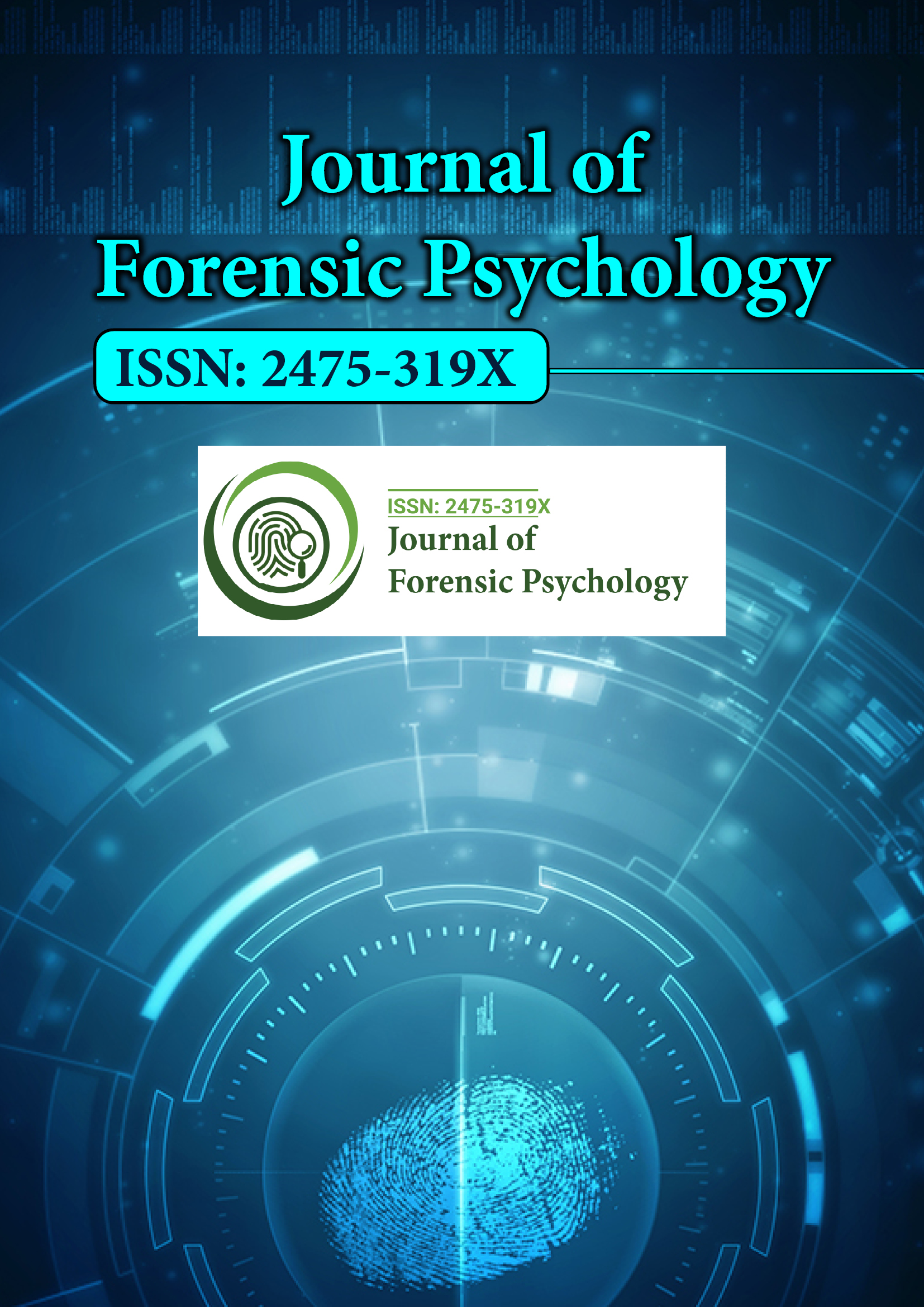Indexed In
- RefSeek
- Hamdard University
- EBSCO A-Z
- Publons
- Geneva Foundation for Medical Education and Research
- Euro Pub
- Google Scholar
Useful Links
Share This Page
Journal Flyer

Open Access Journals
- Agri and Aquaculture
- Biochemistry
- Bioinformatics & Systems Biology
- Business & Management
- Chemistry
- Clinical Sciences
- Engineering
- Food & Nutrition
- General Science
- Genetics & Molecular Biology
- Immunology & Microbiology
- Medical Sciences
- Neuroscience & Psychology
- Nursing & Health Care
- Pharmaceutical Sciences
Commentary - (2021) Volume 6, Issue 10
A Brief Note on Forensic Odontology
S. Mary*Received: 12-Oct-2021 Published: 02-Nov-2021
Description
Forensic odontology is the dealing with, investigation, and analysis of dental proof in criminal equity cases. Scientific dental specialists are associated by assisting organizations to recognize recovered human remainder parts notwithstanding the identification of entire or divided bodies; criminological dental specialists may likewise be closer to help with significant individual age, race, occupation, past dental history, and financial status of unidentified individuals.
The authentication that might be gained from teeth is the age (in youngsters) and finding of the individual to whom the teeth belong. It is performed by utilizing dental records including radiographs, post-mortem and post-mortem studies, and DNA. Another form of confirmation is indentations, left on the person in question, the culprit, or an item found at the crime incident.
Bite mark investigation has been censured by a few organizations, like the National Academy of Sciences (NAS), the President's Council of Advisors on Science and Technology (PCAST), and the Texas Forensic Science Commission.
It generally comes into the notion when confirmed at the incident of crime is a fragment of the mandible or just a single tooth, which is of few millimeters in size. It is possible to determine species by dental tissues because the dentinal fluids contain definite information, which is compared and analyzed using counter current electrophoresis with artificially anti-sera.
The test for DNA analysis is spotted from biological substances such as blood, semen, hair roots, tissue, teeth, bone, and saliva.
In the decayed post-mortem body, although DNA undergoes gradual decomposition by the process of autolysis and bacterial enzymes, the data arrangement, however, exists in the DNA segment. Therefore information is not completely lost even though the body has undergone decomposition. In the new cadaver, uncoagulated blood can be the origin of DNA.
The specimen should be stored in a cold place or frozen. Desiccation, simple air-drying can be used to store bone and bloodstains. Tissue in formalin is usually used for PCR-based DNA testing.
One should be very careful about contaminating the specimens so should wear gloves and use pristine instruments. The collection of new specimens is done by incisional biopsy.
When there is not much knowledge about the post-mortem of the individual, the specimens can be selected from spouses and children as a reference sample for DNA testing. Forensic odontology has a significant role because teeth and saliva is the best source of DNA. Since 1992, the isolation of DNA from saliva and salivary-stained substance is performed.
It is an extensive source of DNA because; it contains sloughed epithelial cells from oral mucosa and the inner surface of the lip. The enzymes such as Streptococcus Salivarius and Streptococcus mutans are present on teeth and in the saliva. In Polymerase chain reaction (PCR) technology, the Streptococcal DNA sequence provides information to identify the bacterial composition from bite marks and can be matched exclusively to those from the teeth responsible.
Teeth with plays a vital source of DNA because its ability to withstand change. Many researchers recommend that teeth are well origins of DNA than skeleton bones. DNA is found in the vascular fluid, odontoblastic process, accessory canals, and cellular cementum.
Dental fluid can also be used for DNA analysis and is a good source for the confirmation of blood groups. The presence of ABO blood grouping antigens in soft and hard tissues makes it possible to determine the blood group of highly decomposed remains. The DNA from the teeth is not only proceeded for pivotal recognition but can also be used as a reference sample to relate the other tissue fragments.
Citation: Mary S (2021) A Brief Note on Forensic Odontology. J Foren Psy. 6:195.
Copyright: © 2021 Mary S. This is an open access article distributed under the terms of the Creative Commons Attribution License, which permits unrestricted use, distribution, and reproduction in any medium, provided the original author and source are credited.

